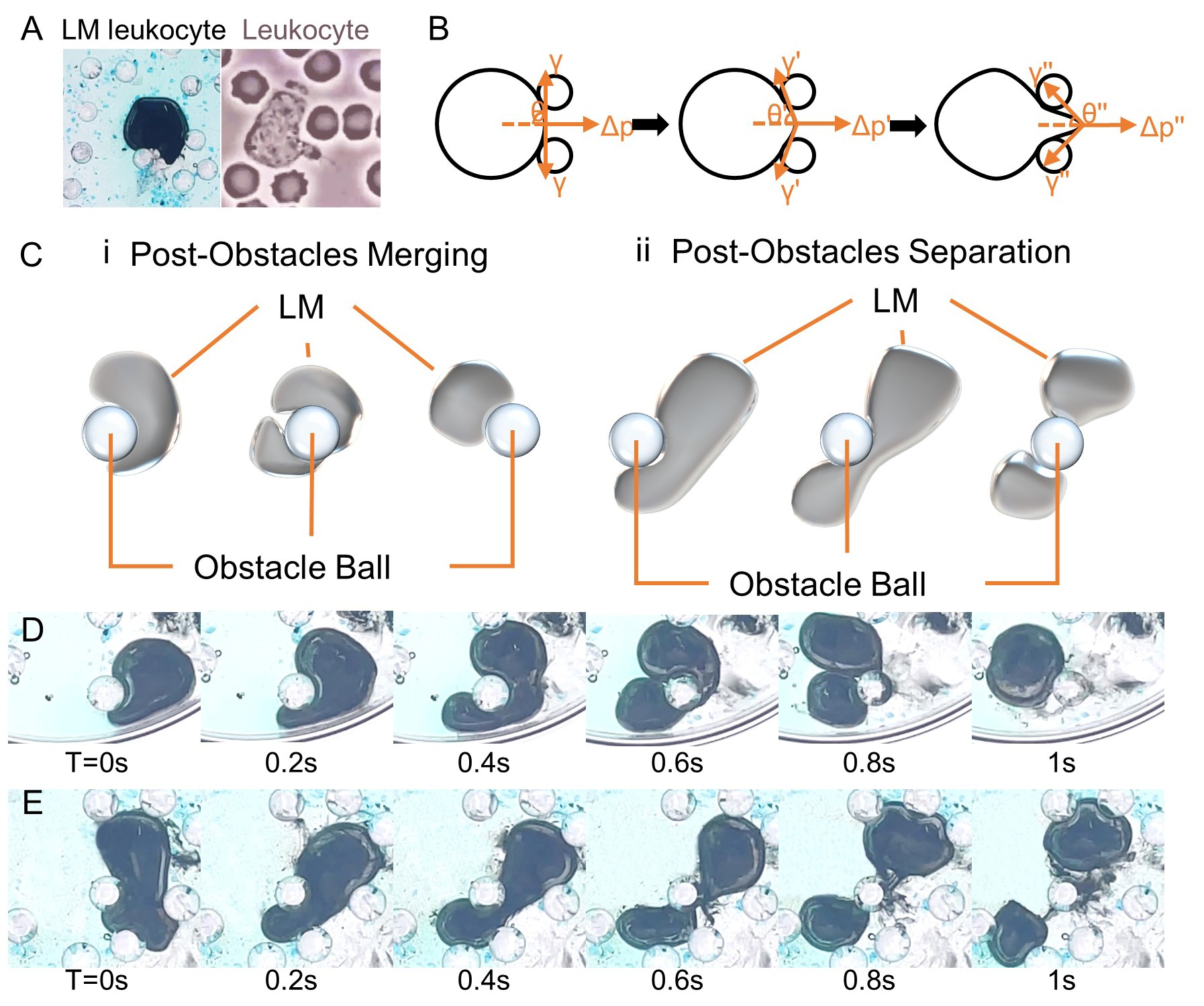Scientists led by Prof. LIU Jing from the Technical Institute of Physics and Chemistry of the Chinese Academy of Sciences (CAS) have created a leukocyte-like liquid metallic entity that vividly simulates various leukocyte behaviors in nature.
Published in Matter on February 10, the researchers demonstrated how these "liquid metallic leukocytes" can autonomously perform complex actions like engulfing foreign substances, changing shape, moving in a pulsatile manner, and even climbing against gravity-showing striking similarities to the dynamic behavior of living cells.
The research team, collaborating with Tsinghua University, introduced a novel approach by combining the mechanisms of chemotaxis and asymmetric chemistry. This synergy enables the liquid metal to exhibit diverse and autonomous behaviors similar to those of real leukocytes, such as shape-shifting and navigating complex surfaces.
According to the researchers, these liquid metallic structures can climb slopes of up to 5° on their own and move through complicated surfaces, highlighting their versatility and potential for future applications. In addition, they can change their shape easily and adapt well to getting around obstacles, making them highly versatile and capable.
The core principle is that the self-adaptive surface tension of the liquid metal continuously changes during its alternating processes of oxidation, reduction, and deoxidation. Experiments also confirmed that the liquid metal leukocyte relies on substance conversion and electrochemical energy differences in its environment, enabling it to move and respond dynamically.
This chemotaxic liquid metallic system shows great potential for diverse applications, including autonomous adaptable sensors, microfluidics, and medical therapies. Furthermore, it opens new avenues for developing advanced nature-simulation systems that mimic various living organisms, marking the beginning of a new frontier at the intersection of materials science and synthetic biology.
This work was supported by the National Natural Science Foundation of China, the Postdoctoral Science Foundation of China, and the Frontier Project of CAS.

Autonomous behaviors of chemotaxic biomimetic liquid metallic leukocytes (Image by LIU et. al.)






